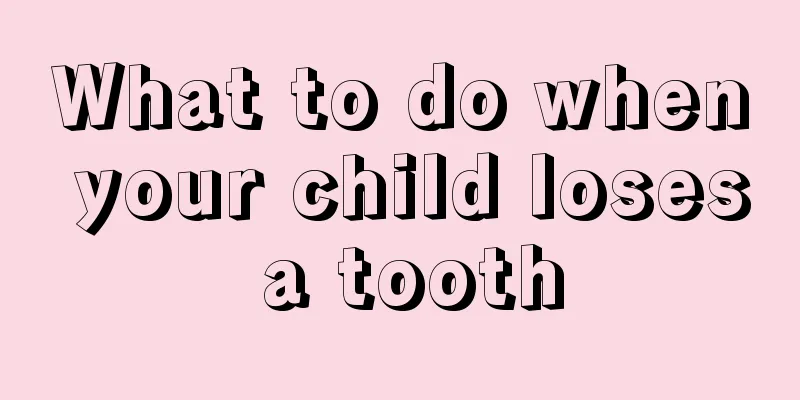What causes a child's face to get hot?

|
Children's immunity is low, especially now that the weather is hot and cold in spring, which always causes children to catch colds and fevers because they don't keep warm. Many parents occasionally find that their children have fevers, and some children even have red faces. In the following article, the editor will introduce this phenomenon. How should we deal with it in our lives? Fever is arguably the most common physical sign in babies. According to statistics, children who go to the hospital due to fever generally account for 10% to 15% of children's outpatient visits. It’s no wonder that when seeing the child’s face flushed red and his body burning, even the calmest parents would panic. Fever is the result of the battle between the human body's defense system and foreign invading pathogens. The higher the fever, the stronger the body's resistance ability, but it does not mean that the disease is more serious. Infants and young children under three months old have not yet fully developed immune functions and weak resistance, so even if they have severe pneumonia, they rarely have a high fever. A common example of high fever is roseola infantum, which is a disease that occurs frequently in infants aged 6-9 months. The body temperature is usually above 39 degrees and the fever lasts for three days. But the child is generally in good spirits, the temperature subsides within 72 hours, a red rash appears on the face and trunk, and the rash disappears and heals within 2-3 days, with almost no sequelae. At the same time, fever is also a self-protection mechanism. Fever can effectively inhibit the growth and reproduction of pathogens and reduce damage to the human body. The most suitable growth temperature for most pathogenic microorganisms is 37 degrees. When the temperature rises, the reproduction ability of pathogens will be significantly reduced. The normal basal body temperature of children is 36.9℃~37.5℃. Generally, when the body temperature exceeds the basal body temperature by more than 1°C, it is considered a fever. Among them, low fever refers to body temperature fluctuating around 38°C, and high fever refers to body temperature above 39°C. Continuous fever for more than two weeks is called long-term fever. The above-mentioned basal body temperature refers to the rectal temperature, which is measured from the anus. Generally, the oral temperature is 0.3℃~0.5℃ lower than the rectal temperature, and the axillary temperature is 0.3℃~0.5℃ lower than the oral temperature. The article shows that young children may have a fever because they are very active. In many cases, the sun is very strong, or they exercise outside for a long time, which can easily cause their faces to become hot and red. This question asks whether the child has symptoms of a fever. |
<<: What to do if middle school students often lose their hair
>>: Is it OK to bathe a child with a fever?
Recommend
What should I do if my 3-year-old child drools?
When the baby is four months old, as a family mem...
What causes sinusitis and headache in babies?
Children nowadays are the treasures of the family...
What to do if your baby is slow to eat
Babies do not all feed at the same speed. Under n...
Can a 2-year-old baby drink pure milk?
For newborn babies, nutrients mainly come from br...
What to do if your baby is short
Basically every parent hopes that their children ...
How to treat hair loss in teenagers?
Hair loss is a physiological phenomenon that occu...
My child feels like there is something foreign in his throat.
Throat abnormalities are not only experienced by ...
Treatment of skin diseases in children
With the rapid development of the pace of life, m...
Symptoms of lung infection in children
Children are in a stage of life when their immune...
The child suddenly has leg pain and cannot walk
Many parents have reported that their children ha...
2-year-old baby with adenoids hypertrophy
Parents should promptly discover any discomfort i...
Children's vision development standards and when to start vision examinations
Nowadays, there are many people with myopia, espe...
What should I do if my baby's head becomes flat when sleeping?
When a baby is born at home, parents and friends ...
How to correct children's hunchback?
If parents find that their children cannot straig...
Can a child's hunchback be corrected?
Correctly correcting children's correct sitti...









